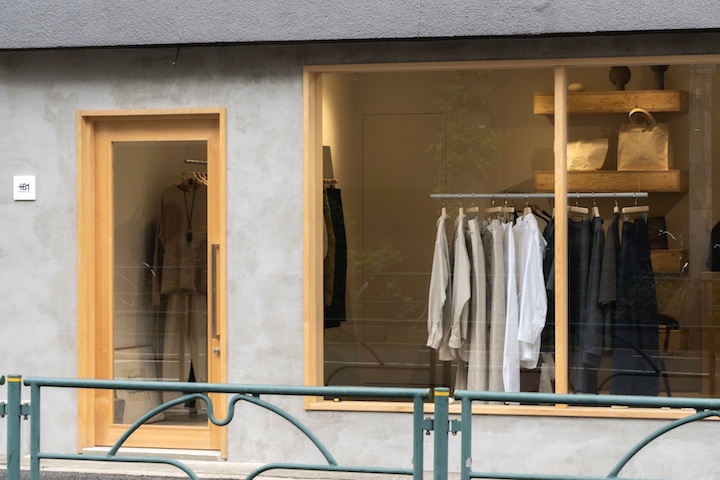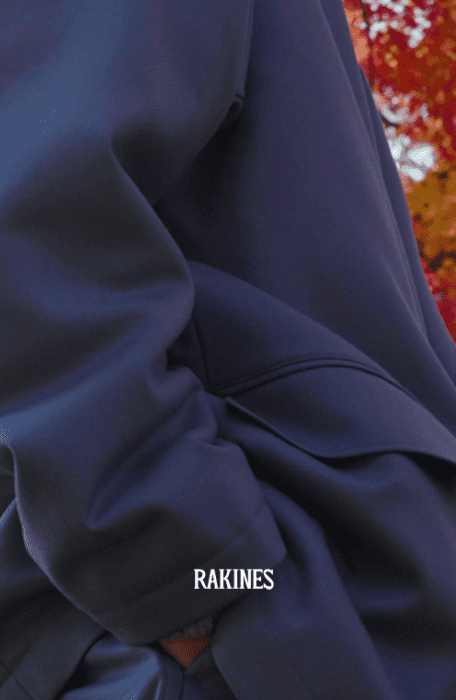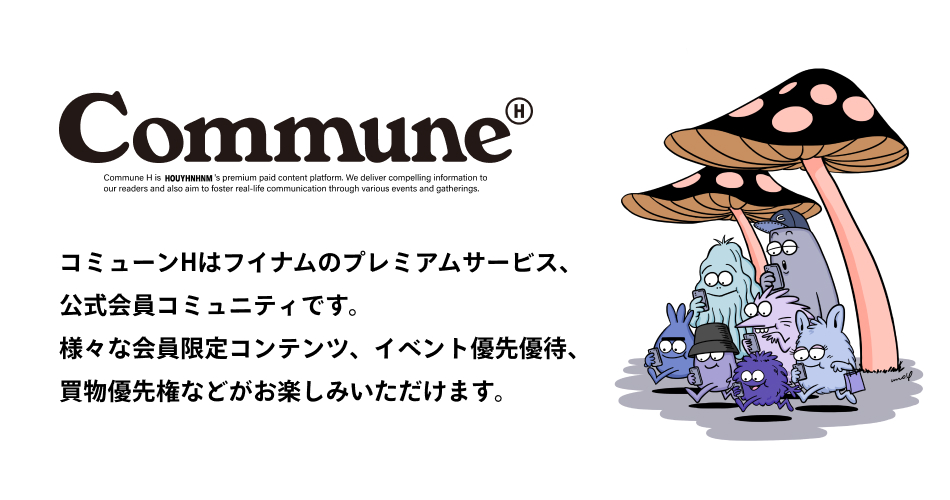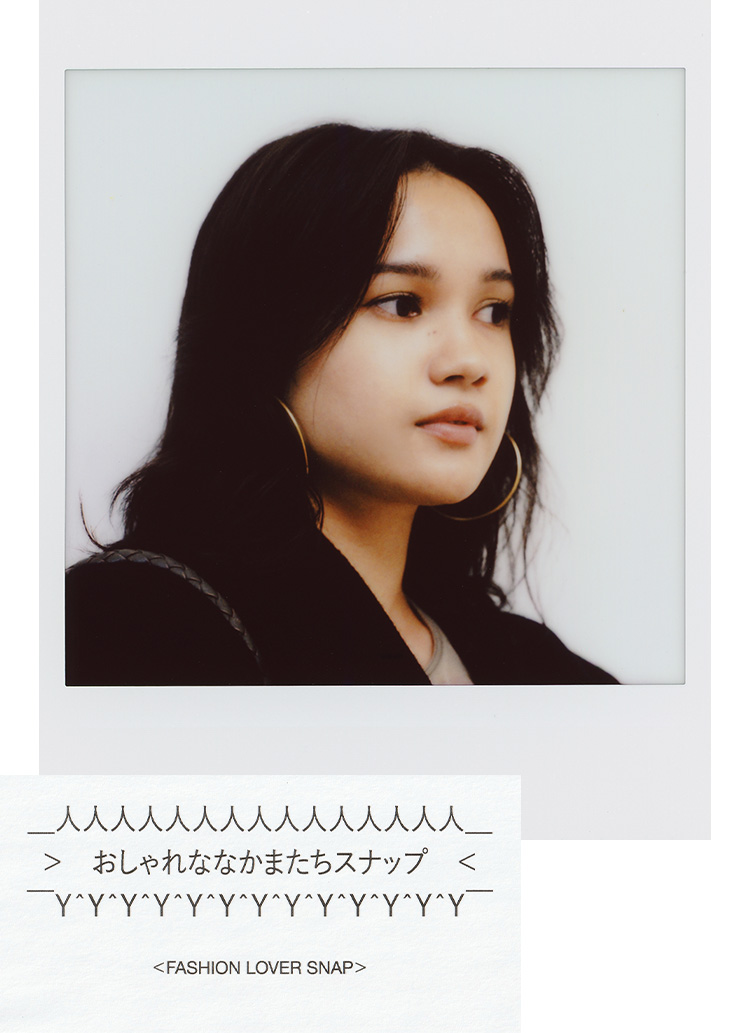Ryo Takashima has been involved in Instagram, YouTube distribution, and the direction of three brands. His select store "+81" opened in Gomotoki. Under the concept of "seamless," the store offers a lineup of items that is "uniquely" Takashima's, spanning genres from Japan and abroad.
What is the real space that he depicts, which he has approached with a style that is not bound by stereotypes? We also asked him about his vision for fashion x traditional crafts.
PROFILE
Born in 1992. Born in Shizuoka, Japan. An architect turned apparel salesman, he became independent in 2018 and uses social networking sites such as Instagram and YouTube to communicate his fashion ideas. He launched his own eponymous brand "RYO TAKASHIMA," and also works with "rams" and "WEISS. He is in charge of everything from direction to buying at the select store "plus eighty-one.
Instagram: @ryo__takashima
A steadfast sense of balance cultivated in the construction industry.
A: To begin with, what made you fall in love with clothes?
I have loved clothes since I was a student, but I really got into fashion when I was working in architecture before I joined "Studios. One of my seniors there was just so stylish that he took me to various clothing stores on his days off, and I gradually learned how to dress.
It was quite a big decision to make the switch to the apparel industry, wasn't it?
That's right. I was in my third year on the job when I was thinking about changing jobs, and it was at a time when many things were coming together, such as getting my certification. For almost a year, I wondered whether I should continue with my current job or try my hand in the fashion industry. But with the encouragement of my seniors and others around me, I decided to change jobs.
So you are now because of that decision. Now that you have your own brand, is there a moment when you feel that you are making the most of what you have learned through your experience in architecture?
I can't make too big a deal about it, but I hope that the clothes I make have a constructed aspect to them. Perhaps that is a big part of the reason why I have recently become interested in interior design.
In the era without "Fatty"...
Seamless selections.
RAKINES, MASU, KHOKI, and other brands line the racks.
Have you always wanted to own your own restaurant?
Yes, it has been my dream since my previous job. I had been telling everyone around me since I was at Studios that I wanted to open my own boutique someday. It finally happened.
Do you think that the social networking was a prelude to the opening of the restaurant?
No, no, I didn't have a clear vision at the time, but rather a vague feeling. I wasn't very good at customer service, so I thought I had to do something different to get noticed.
Looking back, however, I am glad that I took action before anyone else. Because of this experience, many people came to know me, and I think it became the foundation of what I do now, which is to select and transmit what I like.
Mr. Takashima, you have introduced items from a variety of brands, but what criteria do you use to select items for your stores?
At "+81" we have a concept of "seamless" and try to pick up a variety of brands and items, both domestic and international, regardless of genre. I also select items that I have actually visited and seen with my own eyes.
You also select imported brands.
Basically, yes. I went to Paris to meet the designer of HED MAYNER, and I happened to find the KHOKI brand in Omotesando during its first season. I found KHOKI by chance in Omotesando during the first season. I learned about these brands mainly through chance encounters and connections with people.
Your own style is truly "seamless. You skillfully mix various genres, such as street and mode. Is this something you do consciously?
No, I didn't have a particular idea of mixing this with that. When I first started posting on social networking sites, there was no one to refer to, so it was a continuous process of trial and error. There were some successes, but there were also many failures. I think I was able to create a "seamless" style because I had seen so many different things. I also think that nowadays there is no such thing as "◯◯kei," so for young people, a way of thinking like mine is natural.
I see. There are many people who admire your stance, aren't there?
Well, I am very grateful (laughs).
Do you still feel embarrassed?
I am extremely embarrassed (laughs). (Laughs.) There were many customers wearing the same clothes as me, so I was half happy and half embarrassed. I am really grateful.
I guess that's because Mr. Takashima picks items not from the standpoint of "because they look good" but from the honest viewpoint of "I want to wear them.
I would be happy if they felt that way. Customers are important, but I don't think it is right to flatter them. If I am too flirtatious, saying, "This item looks like something the customer would like," I am sure I will not exceed their expectations.
What are the advantages of both the Internet and the real world?
After all, the Internet is by far the most convenient because it can be quickly delivered to and received by various people. I think it is an easy way to get people interested in clothes. On the other hand, it is difficult to complete everything. To put it another way, I would never be able to buy a coat that costs 160,000 yen online (laughs).
I think it is difficult to make a decision unless you see and touch the product with your own eyes and make sure it is right. I know it is difficult in this day and age, but we want to communicate directly with our customers as much as possible. I believe that this is the place to shorten the distance with people who have become interested in our products through the Internet.
Did you come up with this idea through your past experiences?
That's right. I felt that even if we introduced every detail of a product on Instagram or tried it on, the true appeal would not be conveyed until the person actually wears it. It's the same with clothes.
Yes, that is true.
I'm so excited when I find a piece of clothing that says, "This is it! I strongly feel the same way, and I want everyone to feel the joy that only shops can offer. I strongly feel this way myself, so I want everyone to feel the joy that only a store can offer. And even if you don't want to buy something at first, you may end up buying it on impulse because you like it after trying it on. I think it is interesting and attractive because of such irregularities in the real space.
Do you think it is significant that you have been able to communicate directly with customers through your pop-ups?
I was pushed to do it. When we held the pop-up in Osaka, we received many comments on social networking sites that people wanted to see the actual garments, so we decided to give it a try. The customers were happy at the pop-up, and I was happy to hear their comments directly from them and to see them wearing the clothes up close.
Designer x local industry foresight.
The interior design is quite simple. It is a perfect receptacle for the "seamless" concept.
We did not ask a designer to design the interior. We wanted to create a relaxing space with as natural an atmosphere as possible for our customers. When it was finished, I felt a little embarrassed because I felt as if people were looking at my home (laughs).
Yes, before.Takashima-san's homeI have visited you in the past, but I am in your face (laughs). I am interested not only in the clothes, but also in the crafts and artwork, such as the Dita Rams speakers.
We do not sell these items, but we would like to make it not only a store, but also a gallery in the future. We would also like to hold private exhibitions of art and interior design, as well as traditional crafts and local industries.
Traditional crafts and local industries are unexpected.
I had an opportunity to visit Kyoto on another matter and saw a manufacturing site there. However, most of the people there were old men and women. I heard that there is a lack of successors and that many factories are about to disappear due to the impact of Corona, and I am very concerned about this.
Although we have not yet completed our efforts, we are thinking about whether we can apply traditional craft techniques and incorporate them into modern products.
It is true that when an influential young person like Mr. Takashima transmits Japanese technology, it is likely to be viewed from a different perspective. It is precisely because I have seen and worn domestic and international brands that I can appreciate the essential qualities of Japan-made products.
I would like to do so. I realized that even though I am Japanese, I did not know too much about Japan. The store name "+81" is borrowed from the Japanese international dialing code, and I hope that I can send out information from here to the rest of the world.
It would be quite interesting to see Japanese crafts next to "Hedemeiner". It would be truly seamless!
I would like to do that. In order to do so, I would first like to make people close to me happy.
+81
Address: Ichikawa Bldg. 1F, 2-15-7 Gopongi, Meguro-ku, Tokyo
Hours: 14:00 - 20:00, Saturdays, Sundays and holidays 12:00 - 19:00, closed Wednesdays
Official site of "+81
Instagram: @plus81.official





![HOUYHNHNM's YouTube] Fashion director Ryo Takashima and tufting studio KEKE try their hand at rug making!](https://www.houyhnhnm.jp/wp-content/uploads/2021/10/HY_panel2-700x394.jpg)






